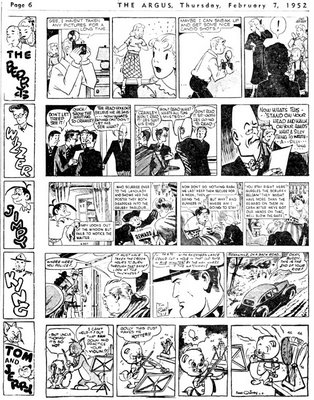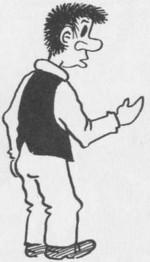I wrote this post as a guest at Bob Wilson's weekly blog Friday on My Mind
---
6 May 2016 Back in January, when Bob and I discussed how lavishly some musicians are eulogised, it was David Bowie’s death that was in the news. Then Prince died a couple of weeks ago and my Facebook timeline filled up with posts from shocked friends. Still trying to digest this, said one, I just… I just can’t believe it said another.
There were Prince videos, and mentions of purple rain, Paisley Park and raspberry berets. A few days later, a friend said he had been listening solidly to Prince’s music for the past few days. Even literary magazine The Paris Review posted twice about Prince to Facebook. When my digital copy of The New Yorker appeared during the week, its cover was given over to a simple depiction of… purple rain. At the weekend, somebody at our monthly book club meeting repeated the (unfounded) gossip about Prince having had AIDS.
The Sydney Morning Herald reported that Prince was soaring to the top of the album charts as mourning fans rush to remember the artist’s legacy through his music. This sounded like clumsy reporting. A fan doesn’t wait for the artist to die, they go ahead and access the music whenever it’s available, and in any case there didn’t seem to be a need for anyone to rush. A dignified saunter, perhaps.
As Bob said in his post following Bowie’s death, “some will grieve, others are just sad,” and on that occasion I was in the sad group, but I couldn’t say I was grieving. I remembered individual songs with affection, but the bottom didn’t fall out of my world.
In the case of Prince, I was on the footpath, watching the wild and colourful funeral procession of a stranger passing by. Many had urged Prince’s music on me over the years, and I had often followed their advice and listened, but I never became a fan. My response wasn’t callous, this was the death of a man of 57, too young in any walk of life, but I wasn’t shocked and I can’t say I was grieving.
The extent of the reaction took me by surprise, but as an outsider I’m not qualified to belittle it. No doubt there were outside observers who didn’t get it when we mourned the deaths of Buddy Holly and John Lennon, two examples when I was an insider and did get it.
Jack Shafer at Politico, wrote about the “mega-obituary” and suggested that Prince died when his prime fanbase, “Prince-loving Boomers and Gen-Xers”, are in a position to call the “editorial shots”. In The Guardian, Ian Jack commented tetchily on the voluminous David Bowie tributes, including 24 pages in The Guardian. He went to that paper’s archives and discovered its muted reporting of the deaths of Buddy Holly and Elvis Presley, a contrast that seems to support Shafer’s point.
Regardless of generational bias, I’ve never understood the impulse to go out and buy – or stay in and download – the works of an artist who has just died. If anything, my impulse has been to give their works a rest for a while. Later, I get back to them with the old enthusiasm.
No doubt, there are a lot of people who discover the artist through the publicity around their death; they like what they hear, and go ahead and buy some of it.
It is remarkable how people can genuinely grieve for a celebrity they’ve never met (Amy Winehouse, Whitney Houston or B.B King). We are routinely saddened, even depressed, about the deaths of unknown people we’ve never met, victims of violence or epidemics. But the grief some people show for celebrities goes beyond that natural empathy for another human. When Steve Irwin died, the circumstances were shocking, and it was a wrench to see such a positive, larger-than-life figure suddenly taken. A teaching colleague and her students made tributes which she delivered to Australia Zoo. They clearly felt that they knew Steve as if he had been present, in person, in their lives. I read an online comment from a woman who said her three-year-old already missed Steve, a sentiment you often see: they miss the celebrity.
I can think of times when I’ve missed a celebrity. I still miss Jon Stewart (still alive, I hasten to add) hosting The Daily Show, because I used to enjoy watching him every day, and now I can’t do that. When Phil Hartman died in violent circumstances it was shocking, and I missed him when he was no longer in the next season of Newsradio, but his absence was in the nature of a cast change, not in the sense that I was used to having him around the place and then he was gone. I was a little sad and reflective when Groucho Marx died, but I couldn’t really say I missed him. I didn’t come down to breakfast and think, “Gee I miss seeing old Groucho there every morning, cracking his egg open and making wise-ass comments over the morning newspaper.”
There is a persistent illusion that we “know” an artist through their work. Of course we know that important aspect of them, but we don’t know them as we know people we see every day. I’m not convinced that we can confidently claim to know a person through their works, in spite of attempts by some scholars of Shakespeare or J.S. Bach to extrapolate biographical details from the works. This is partly because a work of art has a life of its own that is beyond the control of its creator, especially after it’s published and every member of the audience puts their own construction on it.
Note the surprise when a well-loved celebrity disgraces themselves. Bill Cosby? Surely not! We know him so well, it’s not possible. Rolf Harris? Nooo, not Rolf! Please! tweeted the twitterers. We forget that we know only their published work, a little gossip and second-hand reportage, and a carefully crafted public persona that may tell us nothing about them out of the public gaze. Forgetting that, it’s a small step to grieving for them as if we’ve lost a family member or close friend.
I wondered why the cause of Prince’s death was so important to the fans. Then I thought of an example of my own. I’m a fan of British singer-songwriter Nick Drake who died in 1974 aged 26 without achieving much recognition. By the 1990s, when I discovered his albums, musicians were citing him as an influence, his songs were being heard in films, and he was being championed by MOJO magazine.
Even long after the events, I read everything I could, and hung out for the bio-doco A Skin Too Few, made by his sister Gabrielle who disagreed with the coroner’s suicide finding. I was interested in a theory that his depression was down to the grey English winters, a known syndrome. I was fascinated by a video snippet of a young man walking away from the camera at a music festival, in what might or might not be the only existing footage of Nick Drake.
See how they weave a spell on us, when we connect with their work?
All in all, though, a minimalist approach would suit me. Report the news succinctly and without gushing, write a well-researched obituary, and leave the rest to the reader. My ideals are those concise obits in the British press that manage to cover the life and achievements of an artist in one page. As a bonus, they usually get the details right and don’t demand any mass emotional response.
















